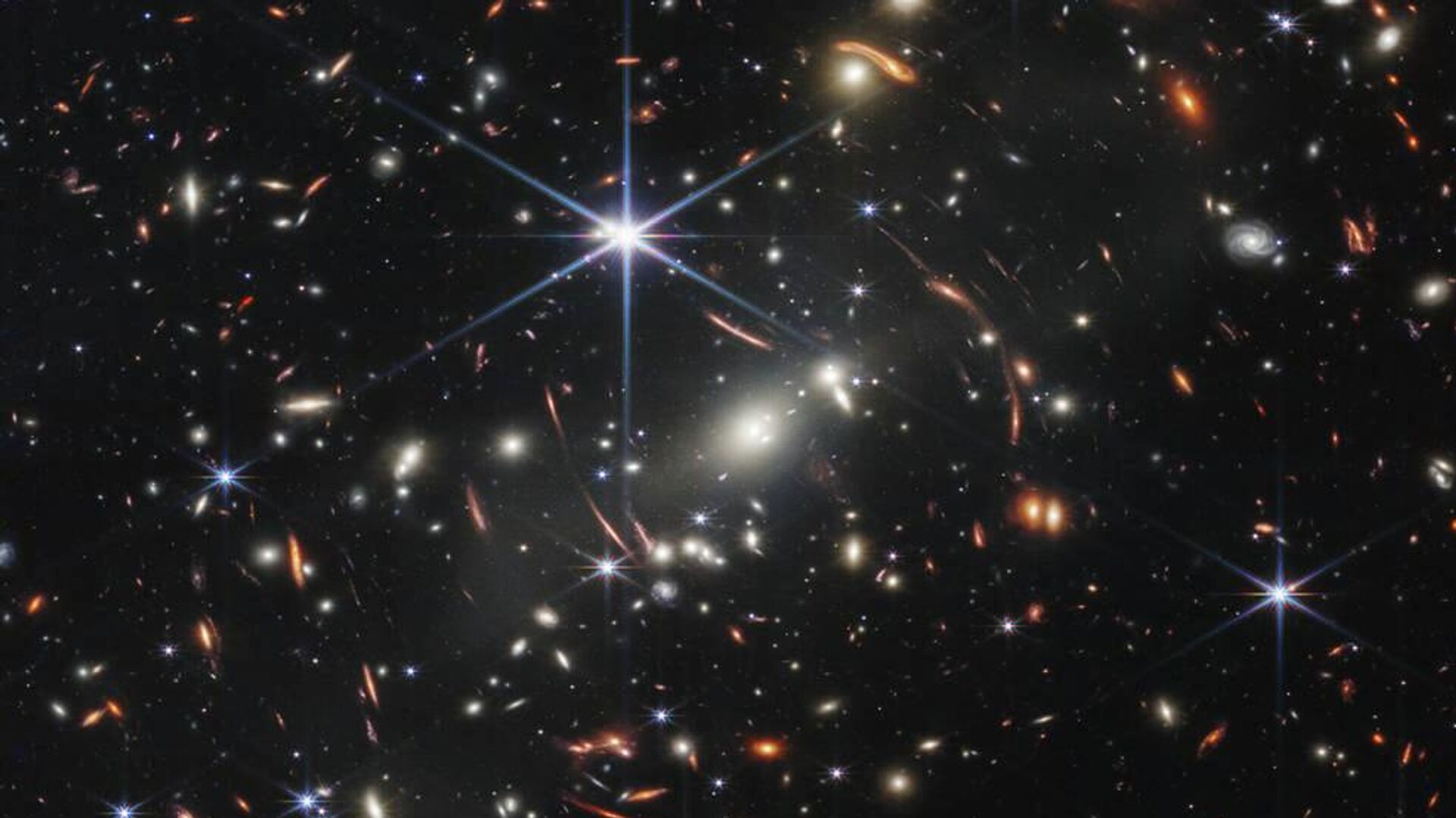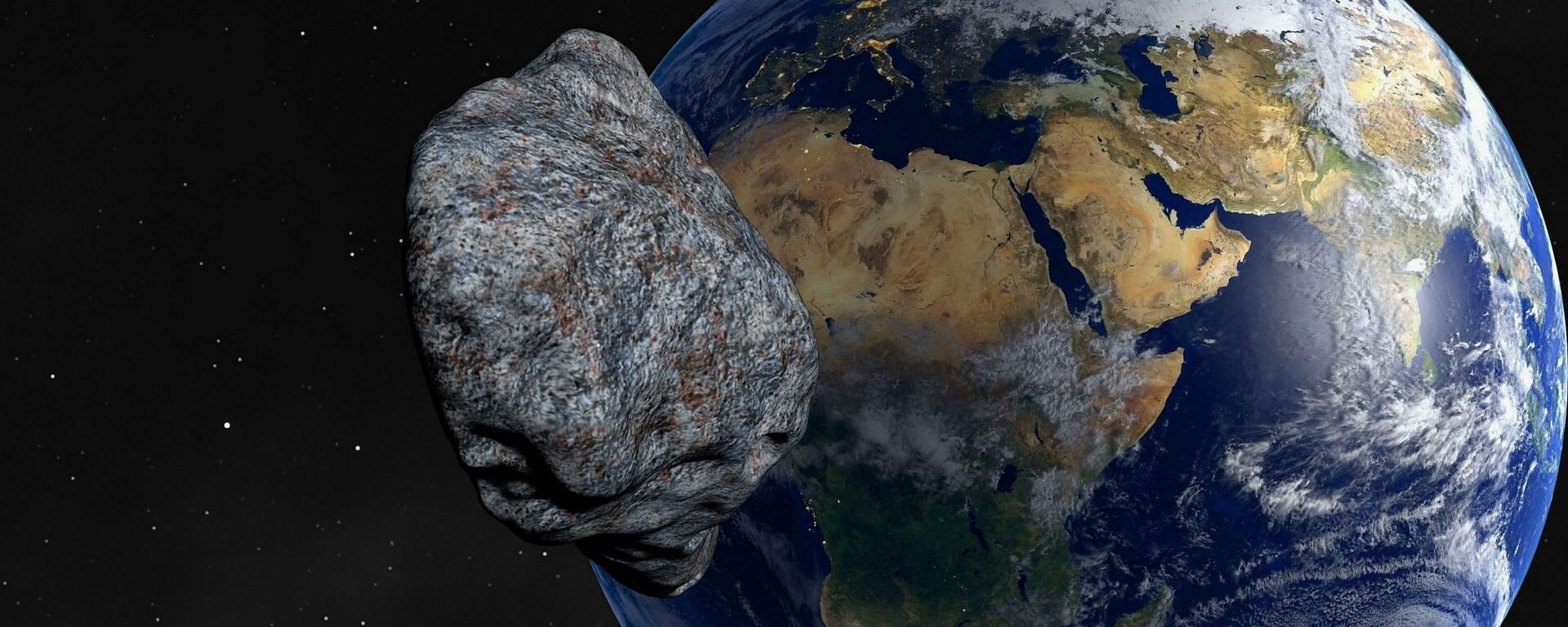https://sputnikglobe.com/20230923/cosmologists-rewrite-theories-as-vast-milky-way-like-galaxies-found-in-early-universe-1113596521.html
Cosmology Revised as New Milky Way-Like Galaxies Discovered in Early Universe
Cosmology Revised as New Milky Way-Like Galaxies Discovered in Early Universe
Sputnik International
These Milky Way-like galaxies discovered by James Webb Space Telescope, once considered rare in the early cosmos, are now found to be remarkably common, dating back over 10 billion years.
2023-09-23T00:56+0000
2023-09-23T00:56+0000
2023-09-23T06:19+0000
beyond politics
science & tech
james webb space telescope (jwst)
space
space exploration
milky way
galaxies
galaxy
https://cdn1.img.sputnikglobe.com/img/07e6/07/0b/1097206042_0:225:985:779_1920x0_80_0_0_655dd7df00eb01477b0736bb30803c60.jpg
Astronomers have shattered conventional wisdom about galaxy formation after pinpointing an abundance of galaxies resembling our Milky Way in the early universe.A global team of scientists, including researchers from the University of Manchester and the University of Victoria in Canada, were able to make the findings through the use of the cutting-edge James Webb Space Telescope.Contrary to previous beliefs, disk-shaped galaxies - characterized by pancake-like structures with rotating cores and spiral arms - have been found to be pervasive throughout the cosmos, even during the universe's infancy, around 10 billion years ago.The Milky Way, being a typical disk galaxy, is considered a promising environment for the emergence of life, given its formation history.Until recently, astronomers presumed these delicate disk galaxies could not survive the tumultuous early universe, marked by frequent galaxy mergers thought to disrupt their characteristic shapes. However, the latest discovery has debunked these notions.The groundbreaking research fundamentally challenges our existing understanding of the universe's evolution, prompting scientists to explore new theories.The prevailing view had been that disk galaxies similar to the Milky Way were a rarity throughout cosmic history, forming only in the later stages of the universe's development. The JWST, with its unparalleled capabilities, has now unveiled the true nature of these galaxies, offering a glimpse into their early existence.The researchers suggest this discovery underscores the rapidity of "structure" formation in the universe, defying earlier assumptions.In light of these findings, astronomers are now compelled to reevaluate their understanding of the first galaxies' formation and the unfolding of galaxy evolution over the past 10 billion years. The cosmos, it seems, continues to surprise us, challenging our preconceived notions about its structure and history.The findings were published in the Astrophysical Journal.
https://sputnikglobe.com/20230808/ai-based-asteroid-hunting-tech-spots-first-dangerous-space-rock-1112467237.html
Sputnik International
feedback@sputniknews.com
+74956456601
MIA „Rossiya Segodnya“
2023
News
en_EN
Sputnik International
feedback@sputniknews.com
+74956456601
MIA „Rossiya Segodnya“
Sputnik International
feedback@sputniknews.com
+74956456601
MIA „Rossiya Segodnya“
new galaxies, what is old galaxies, newfound galaxies, space exploration, james webb space telescope, what does james webb space telescope do
new galaxies, what is old galaxies, newfound galaxies, space exploration, james webb space telescope, what does james webb space telescope do
Cosmology Revised as New Milky Way-Like Galaxies Discovered in Early Universe
00:56 GMT 23.09.2023 (Updated: 06:19 GMT 23.09.2023) The new finding by scientists has determined that the formation of disk galaxies are 10 times more common than what was initially believed by astronomers when reviewing data collected by the Hubble Space Telescope.
Astronomers have shattered conventional wisdom about galaxy formation after pinpointing an abundance of galaxies resembling our Milky Way in the early universe.
A global team of scientists, including researchers from the University of Manchester and the University of Victoria in Canada, were able to make the findings through the use of the cutting-edge James Webb Space Telescope.
Contrary to previous beliefs, disk-shaped galaxies - characterized by pancake-like structures with rotating cores and spiral arms - have been found to be pervasive throughout the cosmos, even during the universe's infancy, around 10 billion years ago.
The Milky Way, being a typical disk galaxy, is considered a promising environment for the emergence of life, given its formation history.
Until recently, astronomers presumed these delicate disk galaxies could not survive the tumultuous early universe, marked by frequent galaxy mergers thought to disrupt their characteristic shapes. However, the latest discovery has debunked these notions.
"Using the Hubble Space Telescope, we thought that disk galaxies were almost non-existent until the universe was about 6 billion years old; these new JWST results push the time these Milky Way-like galaxies form to almost the beginning of the universe," Christopher Conselice, a professor from the University of Manchester remarked.
The groundbreaking research fundamentally challenges our existing understanding of the universe's evolution, prompting scientists to explore new theories.
"For over 30 years, it was thought that these disk galaxies were rare in the early universe due to the common violent encounters that galaxies undergo. The fact that JWST finds so many is another sign of the power of this instrument and that the structures of galaxies form earlier in the universe, much earlier in fact, than anyone had anticipated," emphasizes lead author Leonardo Ferreira, from the University of Victoria.
The prevailing view had been that disk galaxies similar to the Milky Way were a rarity throughout cosmic history, forming only in the later stages of the universe's development. The JWST, with its unparalleled capabilities, has now unveiled the true nature of these galaxies, offering a glimpse into their early existence.
The researchers suggest this discovery underscores the rapidity of "structure" formation in the universe, defying earlier assumptions.
"These JWST results show that disk galaxies like our own Milky Way are the most common type of galaxy in the universe. This implies that most stars exist and form within these galaxies, which is changing our complete understanding of how galaxy formation occurs. These results also suggest important questions about dark matter in the early universe, which we know very little about," adds Conselice.
In light of these findings, astronomers are now compelled to reevaluate their understanding of the first galaxies' formation and the unfolding of galaxy evolution over the past 10 billion years. The cosmos, it seems, continues to surprise us, challenging our preconceived notions about its structure and history.
The findings were published in
the Astrophysical Journal.



